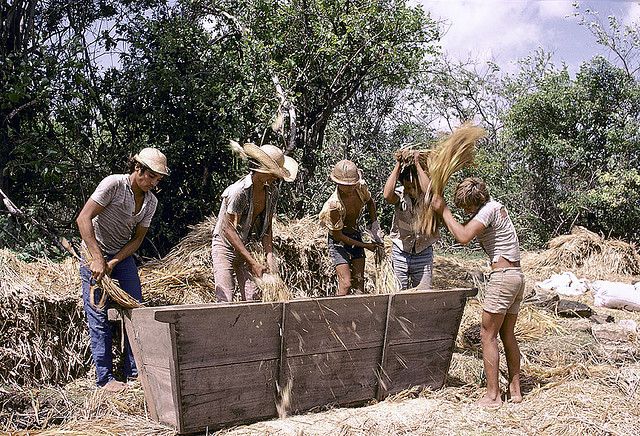
Title
By Stephen Russell and Stacy Kotorac - June 21, 2012
This article was originally posted on the WRI blog, Insights.
This past Sunday, WRI’s Greenhouse Gas (GHG) Protocol team conducted a session at the Rio+20 event, “The Green Economy: Driving Business Value and Competitiveness.” The session included great dialogue between business leaders, policy makers, and WRI experts, and featured one very significant declaration: The British Ambassador to Brazil, Alan Charlton, announced GHG Protocol’s groundbreaking new work with Brazil’s agriculture sector. For the first time, GHG Protocol will develop a guidance that allows Brazilian companies and individual farms to measure, report, and manage greenhouse gas emissions from agriculture. Establishing a methodology to better manage Brazil’s agricultural emissions has enormous potential: Farming is currently responsible for 19 percent of the country’s total GHG emissions. Without adequate reductions, Brazil’s contribution to climate change will only grow, as the country’s agricultural production is forecasted to increase by more than 40 percent between 2010 and 2019 . Through its focus on specific agricultural and land use practices known to reduce GHG emissions and increase farm productivity, the GHG Protocol guidance will support the country in meeting emissions reduction targets. The British Embassy in Brazil is currently supporting this project, which will build off of the GHG Protocol Guidance for the Agriculture sector. This publication will be finalized in late 2012, and will be applicable to agriculture activities in diverse sectors globally.
Carlos Klink, Brazilian Secretary of Climate Change and Environmental Quality, also spoke at Sunday’s event, emphasizing the importance of the agriculture work to Brazil’s GHG reductions. Secretary Clink noted that the many standards and tools the GHG Protocol develops will provide a foundation for Brazilian companies, cities, and policymakers to track progress towards reducing emissions across many different sectors. In fact, the GHG Protocol has a long-standing presence in Brazil, rooted in collaboration with Brazilian companies and policymakers. This forum provided an opportunity to reflect on some of GHG Protocol’s successes in helping Brazil curb climate change.
GHG Protocol’s History in Brazil:
-
Making Brazilian companies become more sustainable: WRI's GHG Protocol was initially launched in 1998, but it’s presence in Brazil began 10 years later with the GHG Protocol Brazil Program. This program was launched in May of 2008 through a collaborative effort between the, Brazil’s Ministry of Environment, the Brazilian Business Council for Sustainable Development, the Fundação Getúlio Vargas (FGV), the World Business Council on Sustainable Development, and WRI. Companies who join the program receive technical assistance from FGV in completing their GHG inventories and in establishing reduction targets. Over the past four years, the program has grown from 26 Brazilian companies to more than 90. Today, emissions reported by these member companies represent more than 20 percent of Brazil’s total emissions (excluding those from deforestation).
-
Improving sustainability in Brazilian cities: Rio de Janeiro was the first city the GHG Protocol worked with in developing a city-wide GHG emissions inventory (prior to that, all inventories were at the corporate level) The experience is now influencing development of the Global Protocol for Community-Scale Greenhouse Gas Emissions (GPC), the first consistent standard for cities around the world to measure and report their GHG emissions.
This work began in order to provide technical assistance to Rio so that it could better measure emissions in order to reduce its GHG emissions 20 percent by 2020, a target established by the municipal climate change law. With GHG Protocol’s assistance, Rio completed its base-year GHG inventory with clear distinctions between direct and indirect emissions (see box). This inventory now serves as the basis for formulating the Rio de Janeiro Low Carbon City Development Program, a city-wide initiative to mitigate climate change. The GHG Protocol is also expanding its Brazilian work to the city of Sao Paulo, which will road test the GPC pilot version and make improvements to the document so that it better fits the specific circumstances of each city.
Plans for the Future
Rio+20 is an important opportunity to reflect on our work in Brazil, but it’s only the beginning. As one of the world’s fastest-growing emerging economies, Brazil is faced with the difficult task of sustaining rapid growth while curbing greenhouse gas emissions and mitigating climate change. GHG Protocol is excited to assist the country—and others—in confronting these challenges. Keep an eye out for GHG Protocol’s continued work in Brazil. In the coming months, we’ll reveal the draft guidance for Brazil’s agricultural emissions and as well as case studies on the work in Sao Paulo.